Ruff and Famous Retrievers

Celebrating history’s most unforgettable duck dogs
By Anthony Hauck
The social media site Instagram, where the hashtag #labsofinstagram has been used more than 7.3 million times, ensures that every dog now has his day, even if the standard 15 minutes has been whittled down to a mere 15 seconds. Fame for Fido is faster, yet more fleeting, than ever.
But there’s nothing fickle about this select group of retrievers. Their combination of capacity and circumstance garnered notoriety in their day, and will until the bygone eras slip into time immemorial. Legends live on, so you will be the next to share these tales. They’ve passed through lips and ears, pen and paper, and ink and typeset. The old ways still work, but an Instagram shoutout? That’ll work just fine, too.

The Brando of Bird Dogs: King Buck
Like Marlon Brando, there wasn’t a role King Buck (1948-1962) couldn’t play or a stage he wouldn’t ultimately command. The black Labrador retriever’s first part was the hardest — a rise to retrieving riches that started inconspicuously in rags. The afterthought of his litter, Buck originally sold for just $50, nearly died of distemper and was then considered an also-ran by a field judge. But that was simply plot development en route to his National Field Trial Championship in 1952. The King proved he could carry a sequel, making it back-to-back titles with another championship in 1953.
While King Buck’s competition legend had been established, he was not to be a trial typecast. Following the first title, the next stop was Stuttgart, Arkansas, and wild mallards in wooded waters.
“He was one of the finest wild duck retrievers I have ever seen,” owner John Olin said. “In spite of his intense field-trial training, he loved natural hunting. He used his head in the wild, just as in field trials. That first wild duck shoot was his day, every minute of it, and he made the most of it. He was beautiful to watch.”
King Buck capped his career with a lifetime achievement award in perhaps his most effortless performance. In 1959, wildlife artist Maynard Reece (no stranger to fame himself) etched Buck eternal as the first — and to date, only — dog to appear on the Federal Duck Stamp.

Canine Cover Boy: Blind of Arden
“Working without a mistake, this picture retriever capped a great performance with a remarkable blind recovery … . Quickly finding the duck, Blind of Arden picked it up with a firm mouth, started swimming back to his handler, owner Averell Harriman. Then, after delivering the bird, he sat stylishly on his haunches. This, however, was pure showmanship, and the judges were instructed to pay no attention to it.” —Life magazine
But the lens of Life photographer George Karger cast a gaze upon 4-year-old “Blind of Arden,” the stunning black Labrador retriever whose performance bested the field at the 1938 open all-age stake at the Long Island Retriever Club — then the top retriever competition.
This was Life’s heyday — with a circulation of more than 1 million — and “Blind” was the first dog ever to grace the title’s cover. It was Instafamous for the times.
“A marvelously intelligent, stocky dog, always friendly with children and the favorite of lady spectators at the trial, the jet-black Labrador has become popular in the U.S. only in the last 10 years,” quoted the accompanying article.
Timing being everything, the confluence of cover and celebrity was bigger than “Blind” — it did much to cement the breed’s bona fides with North Americans.
The Dogfather: Ben of Hyde
In a warring world of late 19th century breed development, Major C.J. Radclyffe made a fateful decision for his kennel at The Hyde in Dorsetshire, thus extending a new branch of the Canine Corleone family tree. In selecting for yellow coat color in the breeding of Labradors, Radclyffe made the dog universe an offer it couldn’t refus: Ben of Hyde became the first officially recorded yellow Labrador retriever in 1899.
What preceded Ben of Hyde — an influx of Tweedcoats, wavy-coats, water spaniels and Zelstones — is difficult to trace. What succeeded, in less than a century, is a chokehold claim to the most popular breed in the United States and a dynasty now nearing 30 years.
No doubt an integral part of this meteoric rise, historically speaking, is the recessive yellow gene that Radclyffe had distinguished, and most yellows henceforth can claim Ben’s heritage. Interestingly, Ben of Hyde’s color was initially labeled “golden” until recognized as yellow by the British Kennel Club in 1903. Ben’s actual coat color was described as butterscotch — modernly referred to as “fox red” — a darker shade of yellow that is to this day often mistaken as a separate breed.
The Dogfather Part II: Buccleuch Avon
If it’s about respect, for every “Remi” or “Nelli” — dogs named after shotguns — there should be 10 Avons, maybe even 100.
The story goes that the 3rd Earl of Malmesbury gifted a pair of excellent retrievers to the 6th Duke of Buccleuch. Was this a case of keeping your friends close and your enemies closer? Mafia-like motivations aside, the resulting bloodline led to Buccleuch Ned, followed by Buccleuch Avon in 1885, the latter considered the foundation sire for modern Labrador retrievers.
The Buccleuch line of working dogs, with their “otter tails,” weren’t trial regulars, but in 1906 that didn’t stop FTCh Flapper from becoming the first Labrador to place at a retriever trial. Since then, Labrador retrievers have become dominant.
A modern incarnation of the Buccleuch kennel exists, and in its historical account of the Buccleuch Labrador, it describes the desirable, traditional characteristics of a good nose, tender mouth and an intelligent and courageous temperament. With timeless qualities, and especially those smarts, Labs got the respect that Fredo never did.
Shipwreck Survivors: Sailor and Canton
As tough as Chesapeake Bay retrievers are known to be, it would be almost discouraging if their origin story included anything less than a sinking ship and cold-water rescue. In 1807, when everyday life off the Maryland coast was what we now describe as reality television, George Law rescued two pups from the sinking ship Canton, subsequently and aptly naming them “Canton” and “Sailor.” They were described as Newfoundland dogs, but now we know they were likely lesser Newfoundland or St. John’s water dogs.
Sailor, a male, and Canton, a female, ended up on different parts of Chesapeake Bay and, by all accounts, never produced a litter together. Despite this fact, Law later noted they both had gained independent reputations as “water dogs.”
“They were most sagacious in everything; particularly so in all duties connected with duck-shooting,” he wrote.
According to Dyane Baldwin, former historian for the American Chesapeake Club, pedigrees from breedings at the Carroll Island Kennels were later linked, with lineage connected back to working dogs at various duck hunting clubs along the shore and, ultimately, Sailor and Canton.
What About Bob?
Before naturalizing the Labrador retriever as our own, the Chesapeake Bay retriever operated as the American original. The breed originated in the United States, and was one of the inaugural nine breeds registered with the American Kennel Club in 1878.
In “taking a line” through history, an important foundational stock figure for Chessies is Gypsy Bob. He was likely considered a champion competitor in events predating organized and recorded field trials. Gypsy Bob was also a three-time Westminster Best of Breed honoree.
His grandson, Skipper Bob, garnered the first AKC Field Champion title for the breed, in 1935. The headline in the New York Times summed up the pride for “one of our own”: American-Bred Dog Triumphs in Long Island Retriever Club’s Field Trials. Skipper Bob was, in fact, the first retriever and dog of any breed to become a field champion.
Gypsy Bob’s great granddaughter and the daughter of Skipper Bob, Shagwong Gypsy, would go on to become the first female to earn an AKC Field Champion title. If there was a 23andMe available for Chessies, there’s a heckuva chance most could be traced to Gypsy Bob.
Record Breaker: Kannonball Kate
From runt-of-the-litter longshot to a legendary hot streak, that’s the story of Kannonball Kate. Owner Pete Lane claimed his retriever had a knack for finding water, even if just let out for air. Once she found it, Kate didn’t stop swimming until she’d amassed 410.5 all-age points, an American Kennel Club field trial record to this day.
Kannonball Kate’s unparalleled run in amateur and open field trial events was capped with the 1978 National Amateur Field Championship. Perhaps even more impressive is her competitive longevity: Kate qualified for the National Open at age 10 in 1982, and was a National Amateur finalist at age 11 in 1983. It was all but formality when Kate got the call to the hall, enshrinement in the Bird Dog Hall of Fame in Grand Junction, Tennessee, in 1992.
Future Legend: Delta?
Considering Delta Waterfowl members own more than 75,000 dogs, 70 percent of which are Labrador retrievers, I wonder if a century from now this list will include a “Delta.” That seems like plenty of time for a black, chocolate or yellow Lab named “Delta” to make a solid mark, and subsequent retrieve into the history books.
Retriever history buff Anthony Hauck writes about bird dogs, conservation and hunting in Saint Paul, Minnesota.

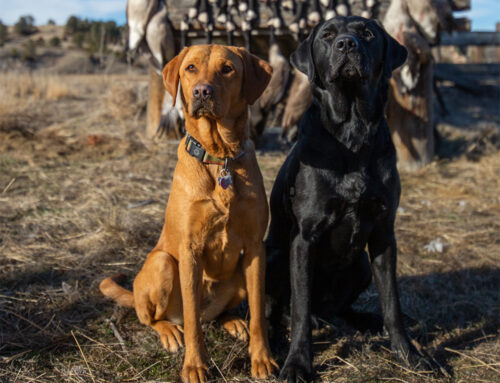
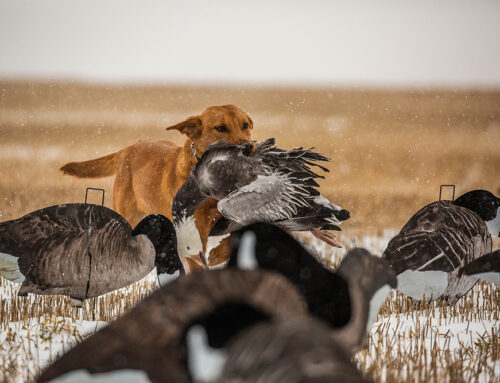
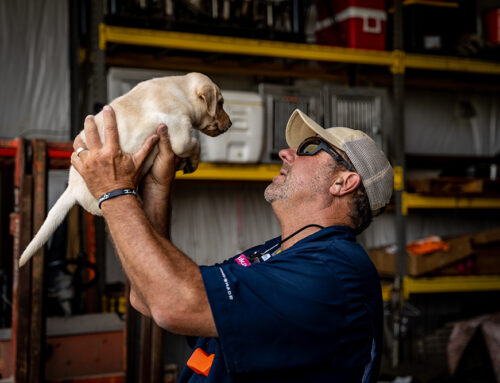
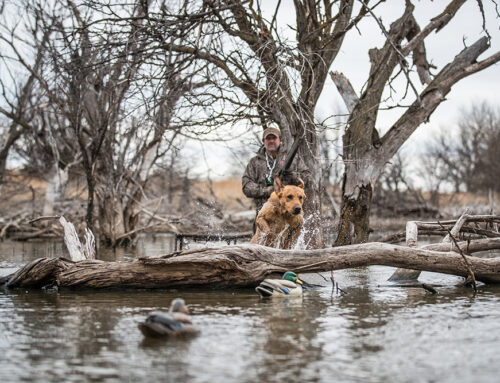
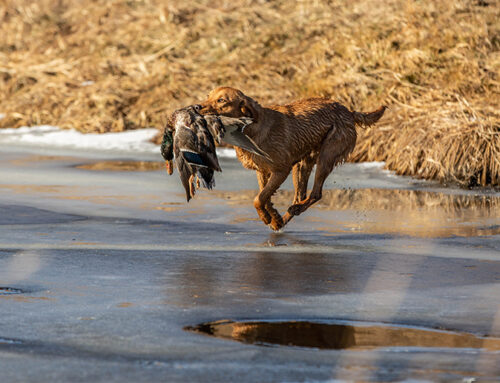
My 2 year old chocolate lab is named DELTA after delta waterfowl